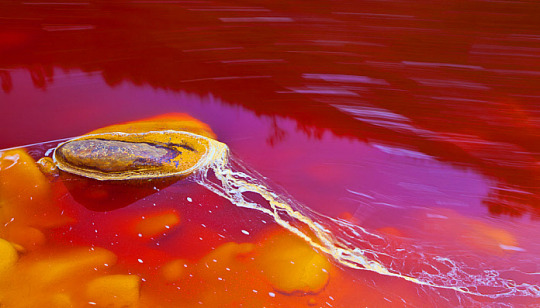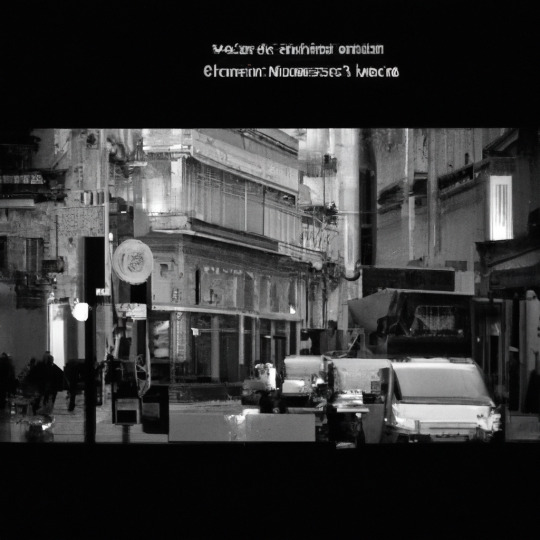#Rio Tinto
Explore tagged Tumblr posts
Text
A petition to stop Rio Tinto’s mine from destroying Serbia’s nature
"We call upon you to prohibit extractive mining projects and metal processing in the Jadar Valley in Serbia.
In particular, we demand that you cancel the proposed Rio Tinto lithium mine in Loznica. We demand that you protect the biodiversity, fertile ground, farming villages and rich cultural areas.
Serbia’s most fertile land can be found in the beautiful Jadar Valley. Small family farmers grow raspberries and plums, engage in beekeeping and sheep and goat herding. The valley borders mountains, is surrounded by water and home to thousands of sustainable multi-generational farms.
But instead of protecting it, the Serbian government has approved a project with multinational mining corporation Rio Tinto, for the exploitation of “Jadarite”, a lithium ore in the valley. The government and the company have ignored scientists and mining experts who advise vehemently against the mine and are threatening to cause irreparable damage to the water, land, air and it’s people. Local citizens, who do not want to give up their sustainable agricultural land which has been in their families for generations, are being ignored.
The process of separating chemically stable lithium from jadarite ore involves the use of concentrated sulfuric acid. The process would take place 20 km from the Drina River and use 300 cubic meters of water every hour, while the chemically treated water would be returned to the Jadar River.
The outpouring of inevitably polluted water, as well as underground waters which contain arsenic, mercury and lead, would contaminate entire river basins and continue their journey across the Jadar to the Drina and Sava, polluting not only Serbia's but other countries' water sources as well.
We reject the pollution of the air. Treatment with the above mentioned (and additional) aggressive acids produces toxic gases that can spread within a radius of over ten kilometers and which will corrode the skin and lungs of humans and animals.
We reject the endangerment of the population around the Jadar Valley in the interests of a multinational corporate profit. Rio Tinto has promised 700 new jobs, but forgot to mention that 19,000 people are set to be displaced or severely effected.
Rio Tinto in 2020, destroyed a 45,000 year old sacred Australian Aboriginal cave. The company and its representatives have been repeatedly convicted of fraud and paid billions of dollars in damages and fines for illegal destruction of land, but continue to ravage and destroy natural environment around the world. The company is accused of participating in war crimes in Papua New Guinea, where a ten-year civil war broke out due to the presence of their mine.
The citizens of Serbia have the right to clean air, clean water and healthy living conditions. Stop Rio Tinto’s lithium mine and protect the people, our heritage, our environment and the rivers of the Jadar Valley. United we can save our environment."
https://action.wemove.eu/sign/2023-03-stop-rio-tinto-EN?akid=s1568260..uAF-ha
The text above explains the situation. This is a very important petition and I'd be very grateful if you could sign it and spread it.
(I see that only people from European countries can sign it, others please reblog for this to reach as many people as possible)
289 notes
·
View notes
Text
If I didnt know better i would think Vuk is making these



Fuck rio tinto
11 notes
·
View notes
Text



Red waters of the Rio Tinto, coloured by dissolved minerals, primarily iron
Photos by Juan Carlos Munoz
#rio tinto#river#red#red water#red river#mineral tinge#geology#water photography#river photography#nature#orange#river landscape
25 notes
·
View notes
Text
youtube
5 notes
·
View notes
Text

The world at 4am. Perfectly quiet and empty.
#photography#at night#pictures#fog#portugal#rio tinto#mine#my pics#this year is starting well ive started taking pics again :3 a new phone does help too lol the pics look better
9 notes
·
View notes
Text
[T]he interdependence of all life within Country constitutes a hard but essential lesson – those who destroy their Country ultimately destroy themselves.
Deborah Bird Rose quoted in an article by Sarah Holcombe and Bronwyn Fredericks in The Conversation. Beyond Juukan Gorge, the relentless threat mining poses to the Pilbara cultural landscape
Holcombe and Bronwyn cite Rose's 1996 paper Nourishing Terrains; Australian Aboriginal views of Landscape and Wilderness, Australian Heritage Commission, Canberra.
Deborah Bird Rose died in 2018. Here is a link to an obituary by Eben Kirksey from The Asia Pacific Journal of Anthropology.
9 notes
·
View notes
Photo

The Serious Fraud Office has unexpectedly shut down its investigations into corruption at Rio Tinto and ENRC. The decision has shocked the business world, and left many wondering what could have prompted such a drastic move. Some fear that this may be the beginning of a cover-up, as the SFO has refused to provide any further information.
3 notes
·
View notes
Text
The Guinean government, Rio Tinto, and other partners has commenced infrastructure construction to reopen their Simandou iron ore mine.
2 notes
·
View notes
Text
#kirill klip#lithium#copper#gold#silver#royalties#tnr gold#gem royalty#tesla#electric cars#argentina#mariana lithium#ganfeng lithium#batteries#los azules copper#shogun gold#alaska#mcewen mining#rio tinto
0 notes
Text
Mitsui investe US$ 5,3 bilhões em projeto de minério de ferro na Austrália
Tóquio, Japão, 20 de fevereiro de 2025 (Kyodo) – A Mitsui & Co anunciou nesta quarta-feira (19) a aquisição de uma participação de 40% no projeto de minério de ferro Rhodes Ridge, localizado na Austrália Ocidental, por US$ 5,34 bilhões. O objetivo é fortalecer sua base de receita a longo prazo. O projeto Rhodes Ridge, operado pela Rio Tinto, é considerado um dos maiores depósitos não…
0 notes
Text
1 note
·
View note
Text
Rio Tinto ve Glencore Arasındaki Olası Birleşme Görüşmeleri
New Post has been published on https://lefkosa.com.tr/rio-tinto-ve-glencore-arasindaki-olasi-birlesme-gorusmeleri-35277/
Rio Tinto ve Glencore Arasındaki Olası Birleşme Görüşmeleri

Rio Tinto ve Glencore arasındaki olası birleşme görüşmeleri, madencilik sektöründe dev bir değişim yaratabilir. Bu süreç, piyasalarda nasıl bir etki yaratacak ve şirketlerin stratejik planları neler? Detaylar için makalemizi okuyun.
https://lefkosa.com.tr/rio-tinto-ve-glencore-arasindaki-olasi-birlesme-gorusmeleri-35277/ --------
#bakır#birleşme#Glencore#kömür#madencilik#madencilik endüstrisi#piyasa değeri#Rio Tinto#Teck Resources#Ekonomi
0 notes
Text

Rio Tinto
Photo by Jose B Ruiz
6 notes
·
View notes
Text

If you're always looking down you will miss the world passing you by.
5 notes
·
View notes
Text
Rio Tinto plans to significantly increase its copper output by 2030 as part of its strategy to lead in energy transition minerals. Speaking at the 2024 Investor Seminar in London, CEO Jakob Stausholm emphasised the company’s shift from iron ore to critical minerals.
0 notes
